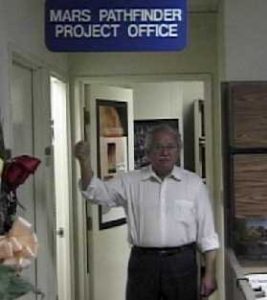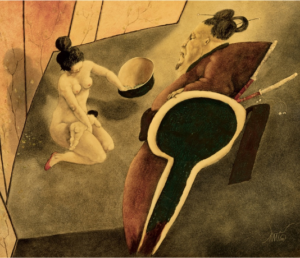Brazilian Jiu Jitsu is a martial art and combat sport based on ground fighting and submission holds. It focuses on the skill of taking your opponent to the ground, controlling him, gaining a dominant position, and using a number of techniques to force him into submission via joint locks or chokeholds.
“The cemetery is full of people who thought they could change themselves tomorrow.” – Boonaa Mohammed
“Dear Mr. Ford (or Mark, if you prefer), I am a two-time author and have been a professional biographer-ghostwriter of over 30 clients’ books since 1999. I also write the occasional event speech. I’m ready to transition out of book ghostwriting ASAP. Question: Do you think I’m suited for copywriting, given my background?” – VC
My response: Copywriting is a job that requires at least four complex skills. The first is the capacity to empathize with the reader. That, you may or may not have naturally. If you don’t, you can still write good and successful ads. But you will never write great ones. The second complex skill is the craft of salesmanship. This is something that can definitely be learned. (AWAI is the place to learn it.) The third is very important, but almost never discussed by copywriting gurus. And that is the skill of good thinking. In advertising, that means thoughts that are both interesting and emotionally compelling. This, too, can be learned. And the fourth is the skill of being able to express good thoughts simply and coherently.
As a seasoned ghostwriter, I suspect you already have three of these four skills. The one you may need to work on – salesmanship – is actually the easiest to learn.
So, yes. You are definitely suited for a successful career as a copywriter. Go for it. And good luck to you!
Check out this young woman playing classic music on an electric guitar…
Life Cycles of Big, Whacky Ideas

In a recent issue of his blog, Peter Diamandis tells the story of Tony Spear, a NASA jet propulsion expert, who, in 1997, was given the impossible job of engineering the successful landing of a probe on Mars with a budget of only $150 million. A fraction of the $3.5 billion (in 1997 dollars) NASA had spent on the Viking mission in 1976.
One of Spear’s key ideas for getting it done was to use airbags, rather than retrorockets and propulsion systems, to cushion the craft’s landing. It was a novel idea. But the experts, Spear remembers, had two responses to it:
- “Don’t use airbags.”
- “No, we’re totally serious, don’t even consider using airbags.”
“Two of them,” said Spear, “told me flat out that I was wasting government money and should cancel the project. Finally, when they realized I wasn’t going to give up, they decided to dig in and help me.”
Together, they tested more than a dozen designs, skidding them along a faux rocky Martian surface to see which would survive without shredding to pieces.
“In the weeks just prior to landing,” said Spear, “everyone was very nervous, speculating whether we’d have a big splat when we arrived.”
But when the landing was a success, everyone was thrilled. And relieved. And a week later, they claimed to have known, all along, that the airbags would work.
In an essay I posted here last year, I talked about this in terms of some of the novel ideas I’ve promoted in my career. Like Tony Spear’s airbag, many of my ideas were rejected out of hand. But almost all of the criticisms were about challenges and difficulties that could arise. In my book, petty problems that could and would be overcome. But my critics didn’t seem interested in making those ideas work. On the contrary, it was as if they were competing in a game called: Who Can Discount the Idea First?
In The Tipping Point, Malcolm Gladwell explained how big, new ideas go from a spark to a full-blown wildfire. He was writing about all sorts of social phenomena, but it applied perfectly to business. And that’s why I recommend The Tipping Point to anyone interested in starting a business.
Of course, Gladwell is not the only public intellectual to offer a viewpoint on how ideas grow and take hold. In that same issue of his blog, Peter Diamandis points out that Sir Arthur C. Clarke, the inventor of the geostationary communication satellite and author of dozens of bestselling science-fiction books, including 2001: A Space Odyssey, had discussed this problem with him many times. Clarke, he recalled, said all new ideas go through a three-phase acceptance cycle:
- In the beginning, people will tell you that the idea is “crazy” – that it will never work.
- Next, people will say: “Well, it might work but it’s not worth doing.”
- Finally, they’ll say: “I told you that it was a great idea!”
Hillary Clinton Fined
Click here.
Biden’s Billionaire Tax Proposal
Warren Buffett has famously said that he pays, in percentage terms, less taxes than his secretary. And on Mar. 28, the Biden administration attempted to do something about that. The proposed fiscal budget for 2023 includes a new 20% minimum tax on billionaires. Being promoted as a plan that “rewards work, not wealth,” it also promises to reduce the federal deficit by more than $1 trillion over the next decade.
This proposal is the definition of specious. It sounds reasonable. Only 20%. Only billionaires. And reducing the federal deficit by a trillion dollars? Who could object to that?
Well…
* It’s not just billionaires, but all households with a net worth of $100 million. (The Nancy Pelosi household is included!)
* The arithmetic was fact-checked. And the reduction in the federal deficit won’t be $1 trillion in 10 years, but more like $240 billion.
* The inclusion of “unrealized investment income” is a big problem. It refers to the profits you have in your stock market portfolio at the end of the year. But what happens if you take a loss the next year? The bill attempts to deal with this by allowing for rollovers, but it looks like a mess waiting to happen.
What I Believe: About Taxation
Taxation is a necessary evil.
The logic is this: Societies cannot exist without law and order. Law and order cannot exist without government. Government cannot exist without income to support its work. Since the government doesn’t create wealth, it must pay for its programs through taxation. In other words, you can’t have civilization without taxation. But for a society to be free and democratic, the rules of taxation must be freely given to the government by its people. And even that is not enough. Taxation must also be sustainable.
Economic history tells us that when tax rates are too high, economic productivity gets lower. To make taxation work over the long term, it must be high enough to support at least the minimum responsibility of the government (maintaining law and order), but not so high that it reduces economic growth.
Some interesting numbers:
* $53 billion – the amount of money commercial casinos collected in 2021, their best year on record.
* 10.19 ounces – the weight of the world’s heaviest strawberry (grown in Israel).
* 161,692 – the estimated pounds of Skippy Peanut Butter recalled because some jars may contain stainless steel from a piece of manufacturing equipment.
* 170 – the number of times a Japanese robot jumped rope in a minute. Ricoh, an imaging and electronics company, won the Guinness World Record for the most skips by a robot in 60 seconds.
Tallinn, Estonia

K and I spent almost a week in Tallinn years ago, visiting a friend who worked for USAID. It was (still is) a beautiful, interesting, and culturally rich city. It offers the visitor well-preserved medieval architecture, along with vintage (Cold War) Eastern European buildings and monuments, plus chic neighborhoods that feel contemporary and Western European.
Six things to do in Tallinn:
- Visit the Alexander Nevsky Cathedral.
- Spend an afternoon at the Kadriorg Art Museum.
- Check out Toompea Castle.
- Walk through the Danish King’s Garden.
- Window shop along St. Catherine’s Passage.
- Dine at Olde Hansa Restaurant in Old Town.

We just purchased this 20×24 painting by the surrealist Salvadoran artist Benjamin Cañas (1933-1987). “The War Lord” was commissioned by clients for their Japanese style home. It spurred Cañas to study Japanese history – and in the late 1970s, he made several paintings in this series.
It is the 15th work of his that we have in our Central American Art collection.
 MarkFord
MarkFord